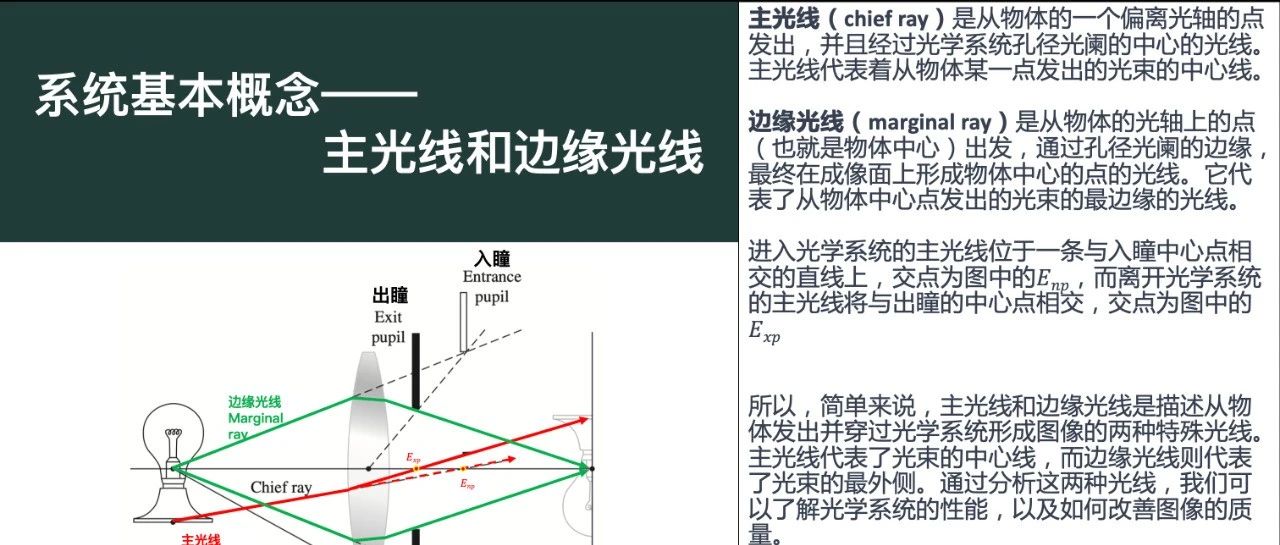Python意外的FFT结果
我正在分析什么是呼吸波形,由3种不同的形状构成(数据来源于磁共振成像,因此使用了多次回波时间;如果您想要一些快速的背景信息,请参阅这里 )。以下是为某些上下文绘制的两个波形的几个片段:
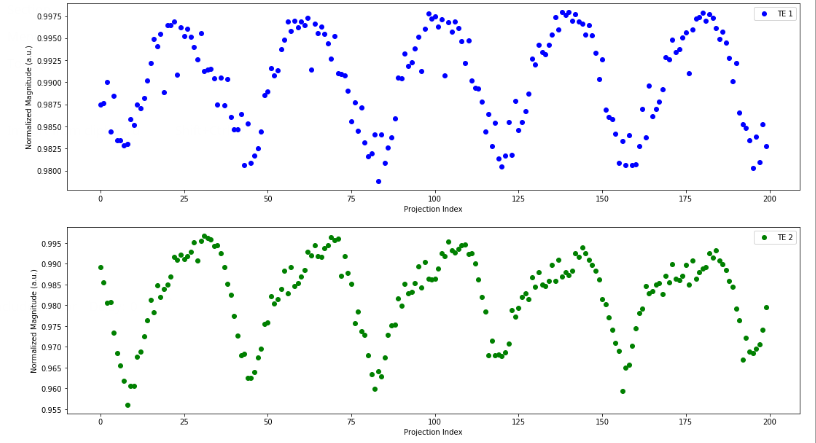
对于每个波形,我试图执行一个DFT,以发现主导频率或呼吸频率。
我的问题是,当我绘制我所执行的FFT时,我得到了两件事之一,取决于我使用的FFT库。此外,和都不代表我所期望的。我知道数据并不总是我们想要的样子,但是我的数据中显然有波形,所以我希望离散傅里叶变换在某个合理的地方产生一个频率峰值。供参考,我预计约80至130赫兹。
我的数据存储在一个pandas数据帧中,每个回波时间的数据都存储在一个单独的系列中。我正在应用所选择的FFT函数(请参阅下面的代码),并为每个函数接收不同的结果。
SciPy (fftpack)
import pandas as pd
import scipy.fftpack
# temporary copy to maintain data structure
lead_pts_fft_df = lead_pts_df.copy()
# apply a discrete fast Fourier transform to each data series in the data frame
lead_pts_fft_df.magnitude = lead_pts_df.magnitude.apply(scipy.fftpack.fft)
lead_pts_fft_dfNumPy:
import pandas as pd
import numpy as np
# temporary copy to maintain data structure
lead_pts_fft_df = lead_pts_df.copy()
# apply a discrete fast Fourier transform to each data series in the data frame
lead_pts_fft_df.magnitude = lead_pts_df.magnitude.apply(np.fft.fft)
lead_pts_fft_df其余的相关守则:
ECHO_TIMES = [0.080, 0.200, 0.400] # milliseconds
f_s = 1 / (0.006) # 0.006 = time between samples
freq = np.linspace(0, 29556, 29556) * (f_s / 29556) # (29556 = length of data)
# generate subplots
fig, axes = plt.subplots(3, 1, figsize=(18, 16))
for idx in range(len(ECHO_TIMES)):
axes[idx].plot(freq, lead_pts_fft_df.magnitude[idx].real, # real part
freq, lead_pts_fft_df.magnitude[idx].imag, # imaginary part
axes[idx].legend() # apply legend to each set of axes
# show the plot
plt.show()后DFT (SciPy fftpack):
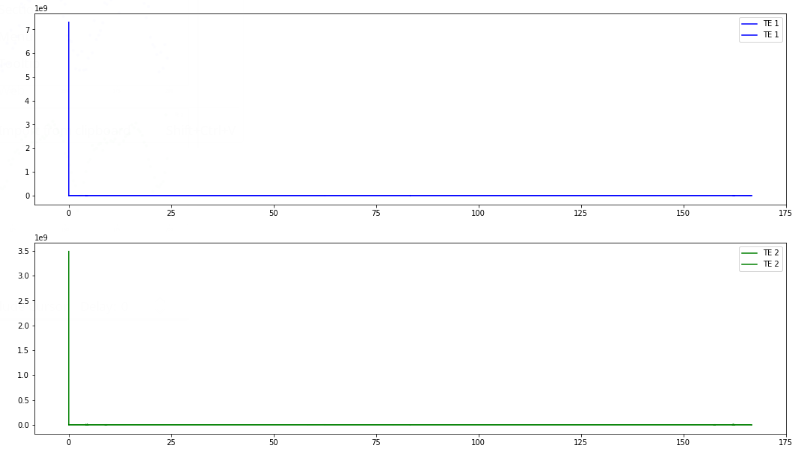
后DFT (NumPy)
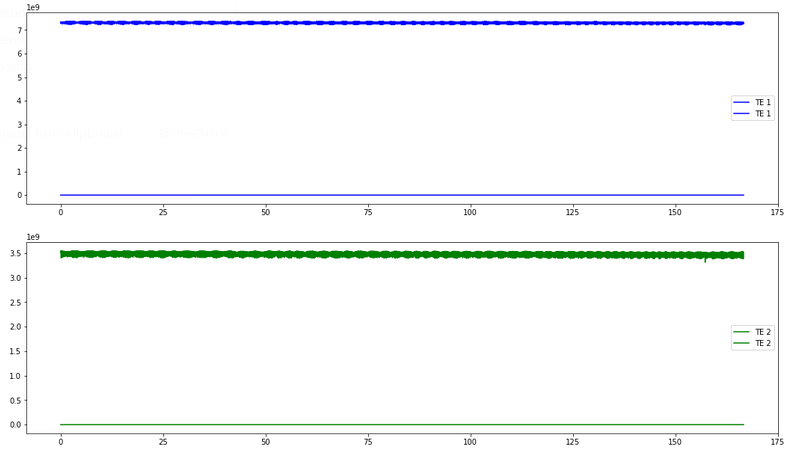
这里是用于创建这些图的数据集(在Dropbox上)的链接,而这里是指向木星笔记本的链接。
编辑:
我使用了张贴的建议,并采取了大小(绝对值)的数据,并绘制了一个对数y轴。新的结果公布如下。看来我的信号里有一些环绕。我没有使用正确的频率刻度吗?更新后的代码和情节如下。
# generate subplots
fig, axes = plt.subplots(3, 1, figsize=(18, 16))
for idx in range(len(ECHO_TIMES)):
axes[idx].plot(freq[1::], np.log(np.abs(lead_pts_fft_df.magnitude[idx][1::])),
label=lead_pts_df.index[idx], # apply labels
color=plot_colors[idx]) # colors
axes[idx].legend() # apply legend to each set of axes
# show the plot
plt.show()
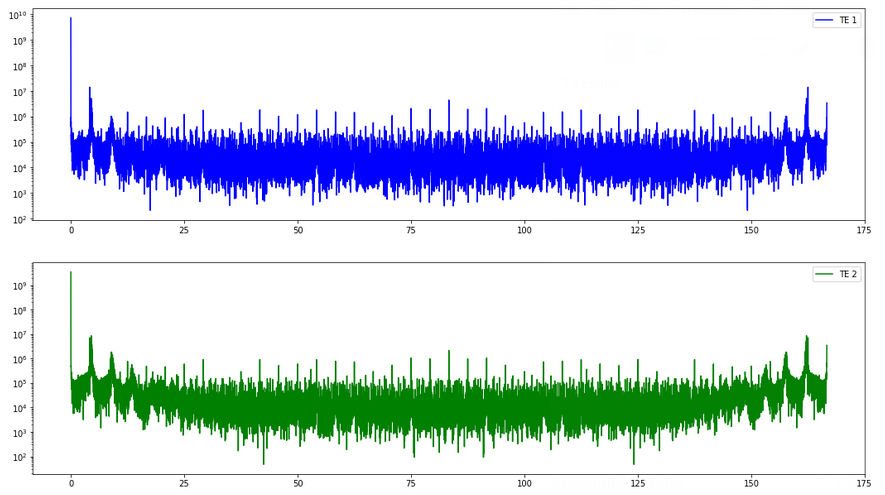
回答 1
Stack Overflow用户
发布于 2018-08-08 10:15:18
我已经解决了我的问题。
鲁安戈对此链接非常有帮助,它帮助我确定如何正确地缩放我的频率箱,并适当地绘制DFT。
另外:我忘了考虑信号中的偏移量。它不仅在DFT中引起0 Hz的巨峰问题,而且对变换后的信号中的大部分噪声也起着一定的作用。我利用scipy.signal.detrend()消除了这个问题,得到了一个非常合适的DFT。
# import DFT and signal packages from SciPy
import scipy.fftpack
import scipy.signal
# temporary copy to maintain data structure; original data frame is NOT changed due to ".copy()"
lead_pts_fft_df = lead_pts_df.copy()
# apply a discrete fast Fourier transform to each data series in the data frame AND detrend the signal
lead_pts_fft_df.magnitude = lead_pts_fft_df.magnitude.apply(scipy.signal.detrend)
lead_pts_fft_df.magnitude = lead_pts_fft_df.magnitude.apply(np.fft.fft)
lead_pts_fft_df相应地安排频率箱:
num_projections = 29556
N = num_projections
T = (6 * 3) / 1000 # 6*3 b/c of the nature of my signal: 1 pt for each waveform collected every third acquisition
xf = np.linspace(0.0, 1.0 / (2.0 * T), num_projections / 2)然后情节:
# generate subplots
fig, axes = plt.subplots(3, 1, figsize=(18, 16))
for idx in range(len(ECHO_TIMES)):
axes[idx].plot(xf, 2.0/num_projections * np.abs(lead_pts_fft_df.magnitude[idx][:num_projections//2]),
label=lead_pts_df.index[idx], # apply labels
color=plot_colors[idx]) # colors
axes[idx].legend() # apply legend to each set of axes
# show the plot
plt.show()
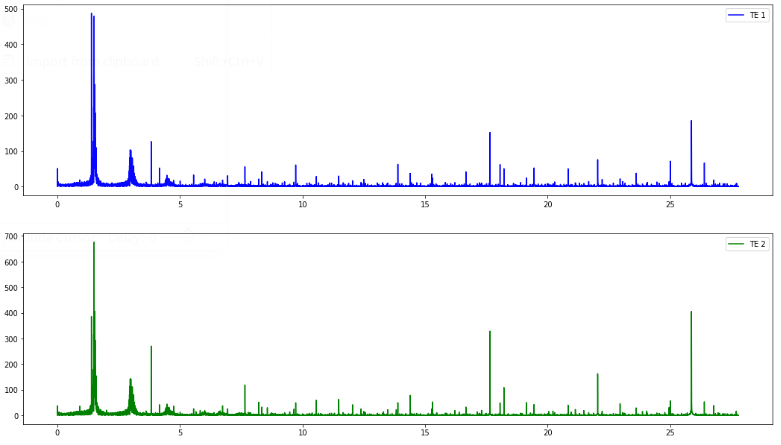
https://stackoverflow.com/questions/51429792
复制





